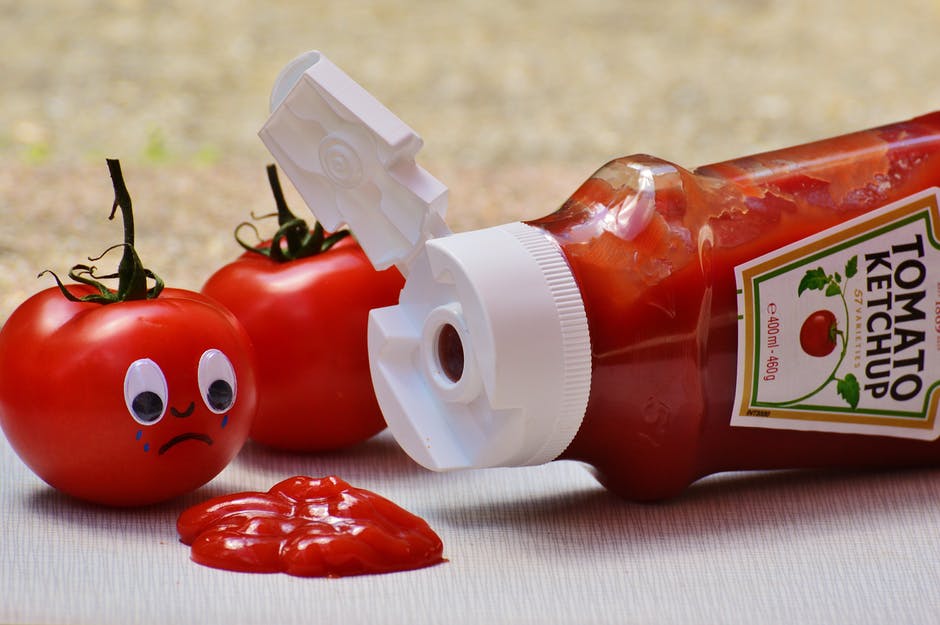Ketchup is a condiment that traditionally uses egg whites, mushrooms, oysters, mussels, or walnuts, among other ingredients. However, in modern times, the unmodified term usually refers to tomato ketchup. Take a look below for 28 more fun and interesting facts about ketchup.
1. Ketchup is a sweet and tangy sauce typically made from tomatoes, sweetener and vinegar, with assorted seasonings and spices.
2. The market leader in the United States and United Kingdom is Heinz Ketchup.
3. Hunt’s has the second biggest share of the United States market with less than 20%.
4. In much of the United Kingdom, ketchup is also known as tomato sauce, a term that means a fresher pasta sauce elsewhere in the world, or red sauce, which is a term specifically used in Wales.
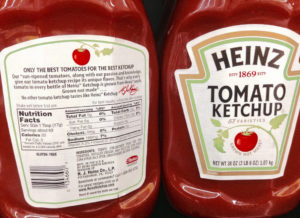
5. Ketchup is most often used as a condiment to various dishes that are usually served hot and may be fried or greasy, such as french fries, hamburgers, hot dogs, hot sandwiches, meat pies, cooked eggs, and grilled meat.
6. In the 17th century, the Chinese mixed a concoction of pickled fish and spices and called it koe-chiap, meaning the brine of picked fish or shellfish; this was an early form of ketchup.
7. By the early 18th century, the table sauce had made it to the Malay states, present day Malaysia and Singapore, where it was tasted by English colonists.
8. The term “ketchup” was used in 1690 in the Dictionary of the Canting Crew which was well acclaimed in North America.
9. The spelling “catchup” may have also been used in the past.
10. In the United Kingdom, preparations of ketchup were historically and originally prepared with mushrooms as a primary ingredient, rather than tomatoes.
11. Ketchup recipes began to appear in British and then American cookbooks in the 18th century.
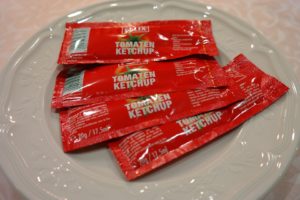
12. In a 1742 London cookbook, the fish sauce had already taken on a very British flavor, with the addition of shallots and mushrooms.
13. From 1750 to 1850, the word ketchup began to mean any number of think dark sauces made of mushrooms or even walnuts.
14. In the United States, mushroom ketchup dates back to at least 1770, and was prepared by British colonists in English speaking colonies in North America.
15. Many variations of ketchup were crated, but the tomato-based version didn’t appear until about a century later after other types.
16. 97% of American homes keep ketchup in their kitchen.
17. By eating just 4 tablespoons of ketchup, you will receive the same nutritional value of an entire medium sized tomato.
18. Ketchup is similar to wine in that there are good and bad ketchup years depending on the tomato harvest.
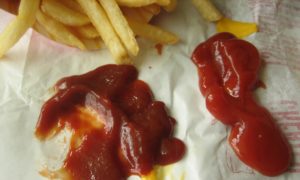
19. Ketchup is only made from ripe tomatoes in the summer.
20. You can use ketchup to restore the glow of your pots and pains since the acid in ketchup removes the tarnish.
21. Ketchup is one of the few packaged foods that doesn’t use any preservatives.
22. It’s one of the many products that’s leachable, meaning that the water within the product migrates together as the larger molecules within the product sediment, ultimately causing water to separate out.
23. Commercial tomato ketchup has an additive, usually xanthan gum, which gives the condiment a pseudoplastic or “shear thinning” property, more commonly known as thixotropic.
24. In 2017, researchers at the Massachusetts Institute of Technology reported the development of a bottle coating for ketchup bottles that allowed all the product to slip out without leaving a residue.
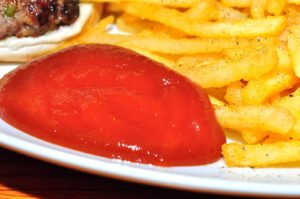
25. Some ketchup in the United States is labeled “Fancy.” This is a USDA grade, relating to specific gravity. Fancy ketchup has a higher tomato solid concentration than other USDA grades.
26. In October 2000, Heinz introduced colored ketchup products called EZ Squirt, which eventually included green, purple, pink, orange, teal and blue.
27. Prior to Heinz, and his fellow innovators, commercial tomato ketchup of that time were watery and thin, in part due to the use of unripe tomatoes, which were low in pectin.
28. In fast food outlets, ketchup is often dispensed in small sachets or tubs. Diners tear the side or top and squeeze the ketchup out of the ketchup packets, or peel the foil lid off the tub for dipping.

